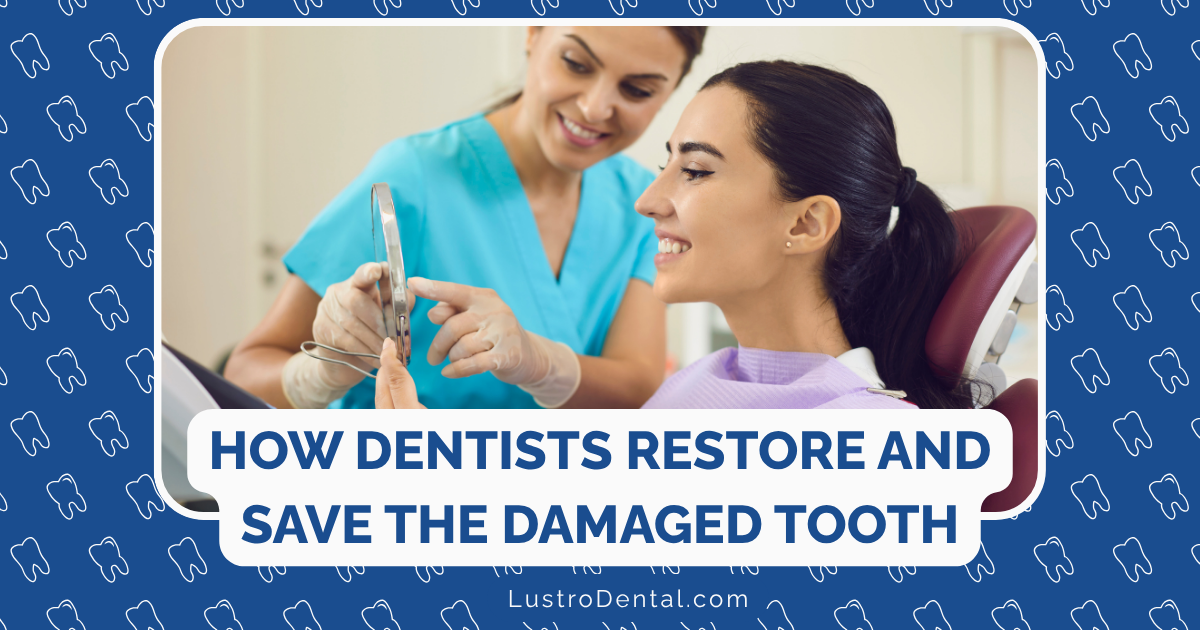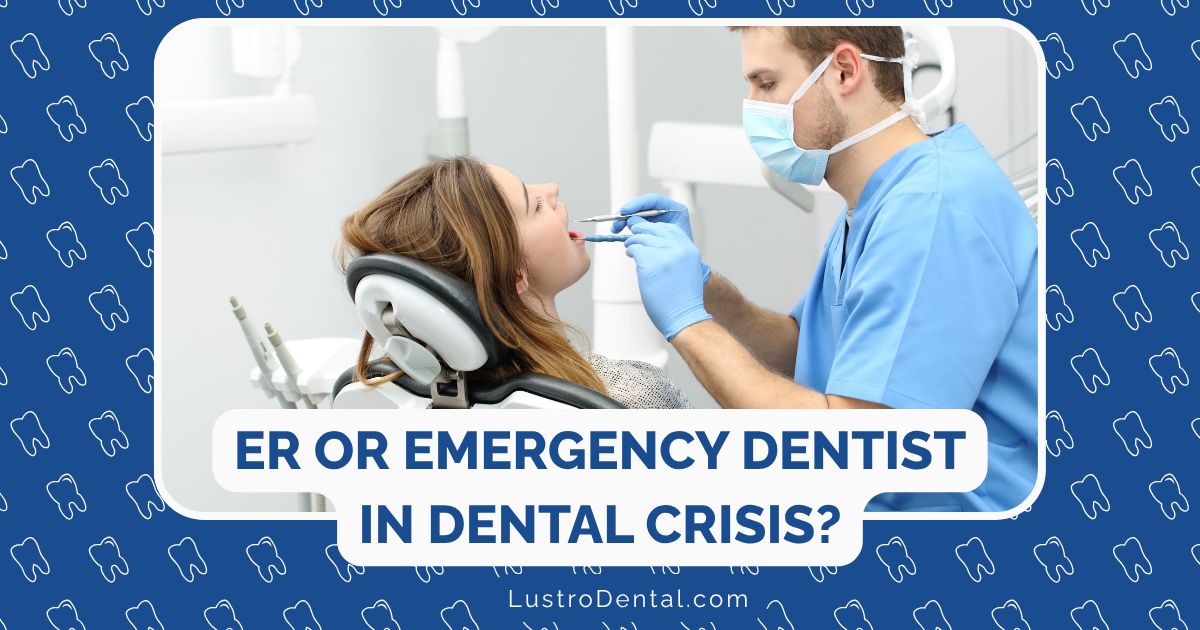After the Abscess: Restoring the Affected Tooth

When Sarah came to our office after her dental abscess was drained, her first question wasn’t about pain or healing—it was about her tooth. “Can it be saved?” she asked anxiously. “I really don’t want to lose it.”
It’s a question I hear often, and one that reveals how emotionally invested we are in our smiles. A dental abscess can be a frightening experience, but the drainage and immediate treatment are just the beginning of the journey. What happens next—the restoration phase—is equally important for both your oral health and peace of mind.
Can Your Tooth Be Saved After an Abscess?
The good news is that in many cases, yes, your tooth can be saved after an abscess. According to the Mayo Clinic, a properly treated and restored tooth can last a lifetime with appropriate care.
However, the prognosis depends on several factors:
- The severity and extent of the infection
- How quickly you sought treatment
- The amount of remaining healthy tooth structure
- The location of the abscess (periodontal vs. periapical)
- Your overall health and ability to heal
Your dentist will evaluate these factors to determine the best path forward. Let’s explore the most common restoration options and what you can expect from each.
Root Canal Therapy: The Primary Restoration Method
For most teeth affected by an abscess, a root canal procedure is the treatment of choice. This procedure allows dentists to save teeth that would otherwise need to be extracted.
What Happens During a Root Canal
The American Association of Endodontists outlines the root canal process, which typically involves:
- Complete removal of infection: After the initial abscess drainage, any remaining infected pulp tissue is carefully removed from inside the tooth.
- Thorough cleaning and shaping: The empty canals are meticulously cleaned, disinfected, and shaped to prepare them for filling.
- Filling and sealing: The cleaned canals are filled with a biocompatible material called gutta-percha and sealed to prevent reinfection.
- Temporary restoration: A temporary filling is placed to protect the tooth until a permanent restoration can be completed.
Many patients are surprised to learn that modern root canal procedures are no more uncomfortable than getting a filling. With proper anesthesia and contemporary techniques, the procedure is typically painless and can be completed in one or two visits, depending on the complexity of your case.
After the Root Canal: Crown Placement
Once the infection has been eliminated and the root canal completed, most teeth will need a crown (also called a cap) to:
- Protect the treated tooth from fracturing
- Restore full chewing function
- Prevent reinfection
- Return the tooth to its natural appearance
According to the Cleveland Clinic, the crown placement usually occurs 2-3 weeks after the root canal procedure. This waiting period allows time for:
- Complete healing of the surrounding tissues
- Confirmation that the infection has been fully resolved
- Custom fabrication of your permanent crown
The crown procedure itself is straightforward. Your dentist will:
- Reshape the treated tooth to create space for the crown
- Take impressions for a custom-made crown
- Place a temporary crown while the permanent one is being made
- Cement the permanent crown at a follow-up appointment
Modern dental crowns are incredibly lifelike, matching the color and contour of your natural teeth. Materials range from porcelain-fused-to-metal to all-ceramic options, with your dentist recommending the best choice based on the tooth’s location and your specific needs.
When a Tooth Cannot Be Saved: Alternative Restoration Options
Despite our best efforts, some teeth are too damaged by infection to be saved. If extraction is necessary, you still have excellent options for restoring your smile:
Dental Implant
A dental implant provides the most natural-looking and functioning replacement for an extracted tooth. The process involves:
- Placing a titanium post in the jawbone
- Allowing the bone to integrate with the implant (osseointegration)
- Attaching an abutment and crown to the implant
Implants prevent bone loss, maintain facial structure, and function just like natural teeth. While they require a longer treatment timeline (typically 3-6 months from extraction to final restoration), the results are worth the wait for most patients.
Dental Bridge
A bridge is another option that can be completed more quickly than an implant. It consists of:
- A replacement tooth (pontic) suspended between two crowns
- The crowns are placed on the adjacent teeth, which support the pontic
Bridges restore appearance and function without surgery, but they do require altering the neighboring teeth to support the crowns.
Removable Partial Denture
For some patients, particularly those with multiple missing teeth or budget constraints, a removable partial denture might be appropriate. Modern partials are more comfortable and natural-looking than ever before.
The Healing Timeline: What to Expect
Restoring a tooth after an abscess doesn’t happen overnight. Understanding the timeline can help you manage expectations:
Immediate Post-Drainage Phase (1-2 weeks)
- Swelling and discomfort gradually subside
- Antibiotics (if prescribed) are completed
- Initial healing of gum tissue begins
Root Canal and Temporary Restoration (2-4 weeks)
- Root canal procedure completed
- Temporary filling or crown placed
- Most pain should be resolved
Final Restoration Phase (4-8 weeks)
- Permanent crown or other restoration placed
- Return to normal chewing function
- Final aesthetic results visible
Complete Healing (2-6 months)
- Bone healing around tooth roots continues
- Gum tissue fully regenerates
- Confirmation X-rays show successful treatment
Dr. John Burgess, a dental specialist, notes in his clinical blog that patience during this healing process is essential. While you may feel better quickly, complete healing at the microscopic level takes time.
Long-Term Care for Your Restored Tooth
A restored tooth requires special attention to ensure its longevity:
Daily Care
- Brush twice daily with fluoride toothpaste
- Floss carefully around the restored tooth
- Consider an antimicrobial mouthwash
Regular Check-ups
- Don’t skip dental appointments
- Allow your dentist to monitor the restored tooth
- Catch any potential issues early
Protection
- Wear a nightguard if you grind your teeth
- Avoid using your teeth as tools
- Be cautious with very hard foods
Watch for Warning Signs
- New pain or sensitivity
- Swelling or discomfort when chewing
- Loosening of the crown or restoration
The American Association of Endodontists emphasizes that while most restored teeth last a lifetime, occasionally retreatment might be necessary if new problems develop. Early intervention is key if you notice any concerning symptoms.
The Psychological Aspect of Tooth Restoration
Something I’ve observed repeatedly in my years of dental health advocacy is that the emotional impact of saving a tooth is profound. Many patients experience:
- Relief at avoiding tooth loss
- Renewed confidence in their smile
- Decreased dental anxiety for future treatments
- Motivation to improve overall oral hygiene
Sarah, whom I mentioned earlier, sent me a photo six months after her treatment was completed. “I can’t believe this is the same tooth,” she wrote. “I smile without thinking about it now, and I’m so glad I didn’t give up on it.”
Is Restoration Always Successful?
While success rates for post-abscess restorations are high—approximately 95% for properly performed root canals—no medical procedure has a 100% guarantee. Factors that can affect success include:
- Complexity of the root canal system: Some teeth have unusually curved or narrow canals that are challenging to treat completely.
- Extent of the original infection: Very severe infections may have caused permanent damage to surrounding structures.
- Timing of treatment: Delayed treatment can reduce success rates.
- Patient factors: Conditions like diabetes may affect healing.
- Restoration quality: Proper crown placement and fit are crucial to long-term success.
If a restoration fails, retreatment is often possible. According to endodontic specialists, even teeth that have failed initial treatment can often be saved with additional procedures or surgical approaches.
Final Thoughts
A dental abscess doesn’t have to mean the end of your tooth. With prompt treatment, appropriate restoration, and good follow-up care, most teeth can be saved and continue to serve you well for many years to come.
The journey from abscess to fully restored tooth requires patience and partnership with your dental team, but the result—a healthy, functional, and natural-looking smile—is well worth the investment.
Have you experienced a tooth restoration after an abscess? What was your experience like? Share your story in the comments to help others who might be facing similar situations.







